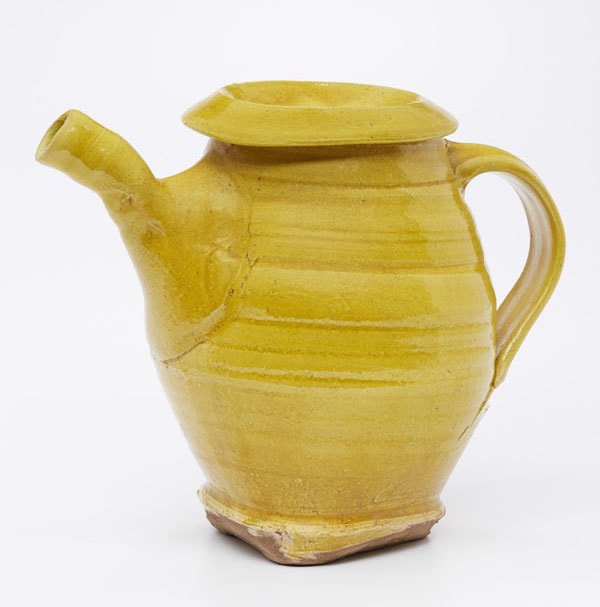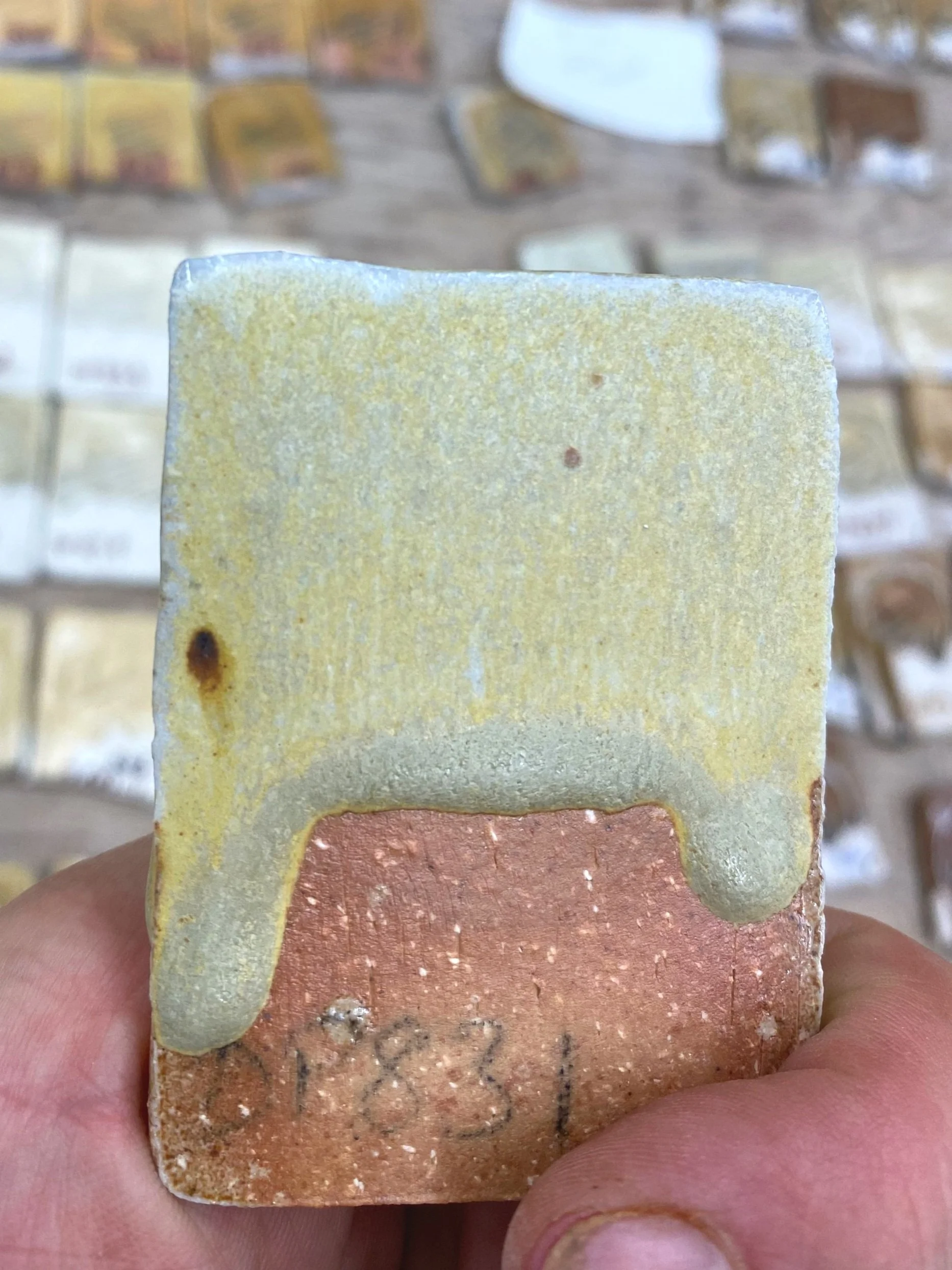Chasing the yellow glaze of my dreams!
I have long yearned after a buttery yellow glaze. I’ve had dreams about it. Have you seen John Reeve’s pots? His yellow pots? So nice. I’ve include on of his teapots below. Here is a short article about him if you are interested.
John Reeve teapot, c. 1983-1986, earthenware, Photo Peter Lee
John Reeve was making earthenware pots though, not stoneware, and I suspect he was using a lead glaze. It is pretty easy to get a beautiful yellow at the lower earthenware temperatures, especially using lead. Here are another couple of juicy examples:
I just love these pots and this color, but am using higher firing materials so that I can easily use rocks and minerals I find as glazes. So the search is o to try and get a yellow at these higher stoneware temperature, using local materials.
I’ve been testing all sorts of materials, trying to get at this. In my last round of granite glaze tests I followed up on some likely candidates. It did not go exactly to plan but I did get some promising results.
I guessed at a potential base glaze which I then altered three different ways: DP 783, DP 807, and DP 831. When deciding the base glaze I looked at previous tests and followed the ones that looked the most promising. I thought this was a reasonable base: DP (Devil’s Playground granite) 50%, 10% bone ash, and 30% dolomite. This base totals 90%, with 10% left for change.
In DP 783 I chose 10% EPK to add more alumina and silica to the base.
For DP 807 I chose 10% lime to add more flux to the base.
For DP 831 I chose to 10% zircopax to add a stiffener and opacifier to the base.
As you can see from the pictures below my base was too fluxy to begin with. Both DP 783 and DP 807 melted and dripped considerably more than I had hoped.
What this extra melt meant was that many of my test glazes dripped off their tiles and stuck them to the tile holders. I should have taken a picture of the carnage really. It was brutal. As you can see on the ones that survived many are broken because I had to snap them out of the tile holders. In many cases I could not decipher which test they were so I had to throw them away. I was not pleased. If I had only put in 20% dolomite rather than 30% in the base glaze then the results would have been much more useful and less drippy! Anyway, here are the ones I salvaged…
Initially when I unloaded the kiln I was tempted to throw the lot away but something told me to save what I could. I’m glad that sense prevailed because I was able to decipher and learn from the results.
First of all, the set where I added lime (DP 783-806) were the most drippy. This is to be expected as the lime is a strong flux. You can see in the tests the classic alkaline drip look to these tests. I am not super into that look.
The set where I added EPK (DP 807-830) did not drip quite as much as the lime laced ones but still ran a lot. There wasn’t enough EPK (only 10%) to make enough of a difference. The color response on these tiles wasn’t that exciting either.
The zircopax set (DP 831-854) was where I got excited. Especially in soda. The test cup that is pictured first in this post is the same glaze formulation as the tests below. The cup and the bottom two tiles here were fired in the soda kiln. You can see how much of a difference in color response there is. From a pale greenish glaze in reduction we get to a yellow in soda.
We can see that the soda affects the color significantly, but also makes the glaze more fluxed. It wants to melt too much. I will have to stiffen the glaze in my future tests.
There were some other interesting tones!
As much as I was excited about this yellow, I was perhaps more excited for some of the other yellows I managed to coax out of the tests.
Looking at this palette I am particularly drawn to DP 836 and 851. Below are some of these tests individually. The first couple actually have EPK in them rather than zircopax. This shows that the yellow influence may be helped by the zircopax but it is not the cause. I suspect the dolomite is the magic that causes the yellow.
I am thrilled with the colors of these tests, but obviously have some work to do to make them less drippy! I hope that when I stiffen them up the color response is the same. I am really excited to test further in this direction, and also use some of the dolomite I collected in Logan Canyon rather than bagged, processed dolomite.
I have 4 different types of dolomite from the canyon to try out and compare. We shall see if millions of years and slightly different composition makes a significant difference in the glazes.






























